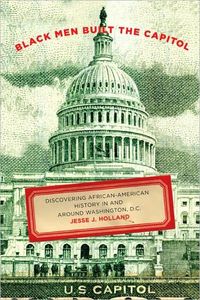

Purchase
Discovering African-American History In and Around Washington, D.C.
Globe Pequot Press
September 2007
On Sale: September 1, 2007
216 pages
ISBN: 0762745363
EAN: 9780762745364
Hardcover
Add to Wish List
Non-Fiction
Millions of people visit the National Mall, the White House,
and the U.S.
Capitol each year. If they only hear the standard story, a
big question remains:
“Where’s the black history?” Packed with new information and archival photos, Black Men
Built the Capitol
answers this question. In this thoroughly researched yet
completely accessible volume, Washington insider and
political journalist Jesse J. Holland shines a light
on the region’s African-American achievements, recounting
little-known stories
and verifying rumors, such as: • Enslaved black men built the Capitol, White House, and
other important Washington structures. • Philip Reid, a thirty-nine-year-old slave from South
Carolina, cast and helped
save the model of the Statue of Freedom that sits atop the
Capitol Dome. • The National Mall sits on the former site of the city’s
most bustling slave market. • The grounds that are now Arlington National Cemetery
were, from 1863 to
1888, a self-sustaining village for former slaves called the
Freedman’s Village. Included are hundreds of places in the District of Columbia,
Maryland, and Virginia that illuminate “the rest of the story” for
Washington residents and visitors alike.
Comments
No comments posted.
Registered users may leave comments.
Log in or register now!
| 


 © 2003-2024 off-the-edge.net
all rights reserved Privacy Policy
© 2003-2024 off-the-edge.net
all rights reserved Privacy Policy